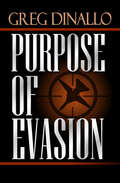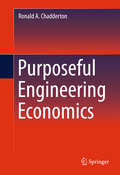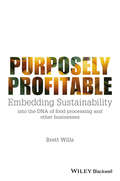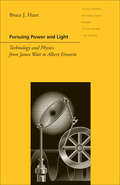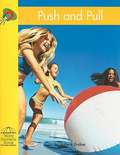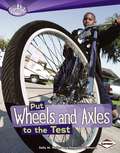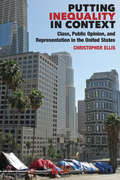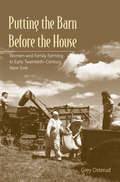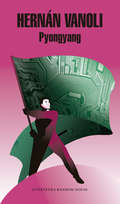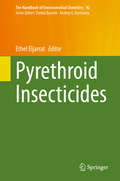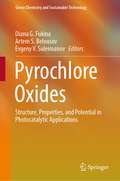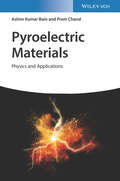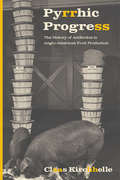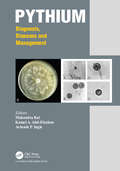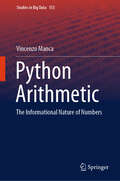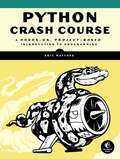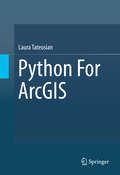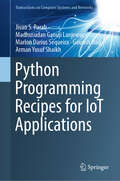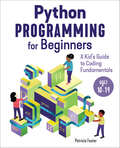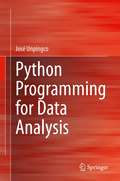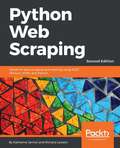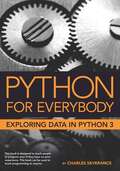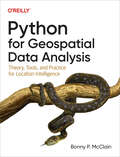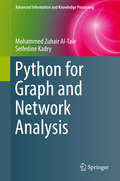- Table View
- List View
Purpose of Evasion
by Greg DinalloGreg Dinallo&’s blockbuster Rockets&’ Red Glare earned rave reviews for its ingenious use of the Cuban Missile Crisis and detailed knowledge of current military technology. Now, with Purpose of Evasion, Dinallo proves he&’s a master of the techno-thriller genre. Seven Americans languish in captivity somewhere in the Middle East. Soon they will begin to die. In desperation, CIA Director Bill Kiley authorizes the shadowy air force colonel Richard Larkin to carry out a shocking plan: Under the cover of a punitive air raid on Libya, Larkin will deliver two highly sophisticated F-111 bombers to Libyan dictator Muammar el-Qaddafi. The reason? Qaddafi claims that he knows where the hostages are and that he can deliver them safely into American hands. The catch? Larkin must kill two American pilots to make the plan work. In Beirut, a brilliant and handsome Saudi named Saddam Moncrieff, secretly working for the CIA, arranges a meeting with an old lover. She is Katifa, passionate, flawlessly beautiful, and completely committed to the vicious Palestinian terrorist Abu Nidal, who had hidden the hostages somewhere in the Middle East. For the sake of the hostages, Moncrieff must somehow turn Katifa against her master. As Larkin&’s cynical plot is executed, he makes one crucial mistake: Major Walter Shepherd, one of the American pilots marked for death, escapes. As long as Shepherd lives, the operation can be exposed. Kiley and Larkin make a decision: Shepherd must be found—and killed. A team of assassins is dispatched to locate and terminate the fiercely independent air force pilot. Shepherd sets out on a heart-stopping journey to save his honor and his life—unaware that, at the very same moment, a crack navy SEAL team has been sent on a mission to rescue the hostages. The tension mounts to unbearable levels as Nidal&’s deadline for killing the hostages draws near, and Shepherd finds himself caught in the violent madness that is the Middle East.Purpose of Evasion is a stunning triumph, an eerily plausible &“what if?&” techno-thriller set in a world where deception is a way of life and death haunts every moment.
Purposeful Engineering Economics
by Ronald A. ChaddertonPurposeful Engineering Economics stands as a unique and highly original complement to the traditional engineering economics curriculum. This primarily narrative text conveys the essence of an "Austrian" economic perspective on cash flow analysis and decision making in engineering without extensive tables and graphs and requires very little mathematics. The book's objective is to add a new perspective to the usual study of cash flow analysis and solely econometric engineering decision making. The author draws on the methodology of the Austrian Economists--a school of economic thought that bases its study of economic phenomena on the interpretation and analysis of the purposeful actions of individuals. The book includes an array of illustrative case studies examined in detail by the author and emphasizes the importance of market processes and price signals to coordinate engineering plans.
Purposely Profitable
by Brett WillsCompeting and winning in today?s competitive marketplace requires a strategy that includes sustainability. Business leaders who embrace it and convey a strong sense of purpose behind their strategy are propelling their organizations into revenue-increasing, cost-reducing outcomes. Purposely Profitable: Embedding Sustainability into the DNA of Food Processing and other Businesses provides a proven, step-by-step methodology for integrating sustainability into the strategic plan to develop a strategy that is sustainable and aligned to a greater purpose. This book notably includes the following: A primer on Sustainability that defines Sustainable Business and presents the Business Case for Sustainability What is an organizational purpose and why is it so important in today?s competitive marketplace Step by step instructions, supported by a case study, for developing each component of the strategic plan (Purpose, Vision, Strategic Pillars, KPI?s, Goals, Programs Action Plans, and Tactical Execution) A suite of tools and resources to support the development and execution of the strategic plan Scientists and managers in the global food supply chain, sustainability professionals, researchers, students, regulators, executives and business owners will come to learn and understand a powerful system for developing a strategy that is sustainable in order to maximize organizational performance.
Pursuing Power and Light: Technology and Physics from James Watt to Albert Einstein (Johns Hopkins Introductory Studies in the History of Science)
by Bruce J. HuntIn the nineteenth century, science and technology developed a close and continuing relationship. The most important advancements in physics—the science of energy and the theory of the electromagnetic field—were deeply rooted in the new technologies of the steam engine, the telegraph, and electric power and light. Bruce J. Hunt here explores how the leading technologies of the industrial age helped reshape modern physics.This period marked a watershed in how human beings exerted power over the world around them. Sweeping changes in manufacturing, transportation, and communications transformed the economy, society, and daily life in ways never before imagined. At the same time, physical scientists made great strides in the study of energy, atoms, and electromagnetism. Hunt shows how technology informed science and vice versa, examining the interaction between steam technology and the formulation of the laws of thermodynamics, for example, and that between telegraphy and the rise of electrical science.Hunt’s groundbreaking introduction to the history of physics points to the shift to atomic and quantum physics. It closes with a brief look at Albert Einstein’s work at the Swiss patent office and the part it played in his formulation of relativity theory. Hunt translates his often-demanding material into engaging and accessible language suitable for undergraduate students of the history of science and technology.
Push and Pull
by Hollie J. EndresYoung readers can find out more about how different objects can be pushed and pulled, and the scientific forces behind motion.
Put Wheels and Axles to the Test (Searchlight Books: How Do Simple Machines Work?)
by Sally M. Walker Roseann FeldmannThe book presents information about what wheels and axles are and how they help people to do work more easily, and suggests ways for readers to use common items to experience for themselves how these simple machines work.
Putting Inequality in Context: Class, Public Opinion, and Representation in the United States
by Christopher EllisRising income inequality is highlighted as one of the largest challenges facing the United States, affecting civic participation and political representation. Although the wealthy often can and do exert more political influence, this is not always the case. To fix political inequality, it is important to understand exactly how class divisions manifest themselves in political outcomes, and what factors serve to enhance, or depress, inequalities in political voice. Christopher Ellis argues citizens’—and legislators’—views of class politics are driven by lived experience in particular communities. While some experience is formally political, on an informal basis citizens learn a great deal about their position in the broader socioeconomic spectrum and the social norms governing how class intersects with day-to-day life. These factors are important for policymakers, since most legislators do not represent “the public” at large, but specific constituencies. Focusing on U.S. congressional districts as the contextual unit of interest, Ellis argues individuals’ political behavior cannot be separated from their environment, and shows how income’s role in political processes is affected by the contexts in which citizens and legislators interact. Political inequality exists in the aggregate, but it does not exist everywhere. It is, rather, a function of specific arrangements that depress the political influence of the poor. Identifying and understanding these factors is a crucial step in thinking about what reforms might be especially helpful in enhancing equality of political voice.
Putting Social Movements in Their Place
by Doug Mcadam Hilary Schaffer BoudetThe field of social movement studies has expanded dramatically over the past three decades. But as it has done so, its focus has become increasingly narrow and 'movement-centric'. When combined with the tendency to select successful struggles for study, the conceptual and methodological conventions of the field conduce to a decidedly Ptolemaic view of social movements: one that exaggerates the frequency and causal significance of movements as a form of politics. This book reports the results of a comparative study, not of movements, but of communities earmarked for environmentally risky energy projects. In stark contrast to the central thrust of the social movement literature, the authors find that the overall level of emergent opposition to the projects has been very low, and they seek to explain that variation and the impact, if any, it had on the ultimate fate of the proposed projects.
Putting the Barn Before the House: Women and Family Farming in Early Twentieth-Century New York
by Grey OsterudPutting the Barn Before the House features the voices and viewpoints of women born before World War I who lived on family farms in south-central New York. As she did in her previous book, Bonds of Community, for an earlier period in history, Grey Osterud explores the flexible and varied ways that families shared labor and highlights the strategies of mutuality that women adopted to ensure they had a say in family decision making. Sharing and exchanging work also linked neighboring households and knit the community together. Indeed, the culture of cooperation that women espoused laid the basis for the formation of cooperatives that enabled these dairy farmers to contest the power of agribusiness and obtain better returns for their labor. Osterud recounts this story through the words of the women and men who lived it and carefully explores their views about gender, labor, and power, which offered an alternative to the ideas that prevailed in American society. Most women saw "putting the barn before the house"-investing capital and labor in productive operations rather than spending money on consumer goods or devoting time to mere housework-as a necessary and rational course for families who were determined to make a living on the land and, if possible, to pass on viable farms to the next generation. Some women preferred working outdoors to what seemed to them the thankless tasks of urban housewives, while others worked off the farm to support the family. Husbands and wives, as well as parents and children, debated what was best and negotiated over how to allocate their limited labor and capital and plan for an uncertain future. Osterud tells the story of an agricultural community in transition amid an industrializing age with care and skill.
Pyongyang
by Hernan Alberto VanoliCuentos de ciencia ficción política y biológica por uno de los autores jóvenes que más agitan la escena literaria argentina. Una empresa de carpooling convoca almas irredentas que son perseguidas por osos callejeros. Una pareja emprende novedosas técnicas de fertilización y logra sus propios bebés de Rosemary. Una logia mundial de cintas de correr planea una revolución. Y el copamiento de 1989 en La Tablada desemboca en una granja de trolls militada por tiernos ancianos. Las historias de Pyongyang hablan de un totalitarismo suave, cariñoso y veloz, donde hacer un duelo parece imposible, las máquinas nos odian y el progreso es la sagrada ideología oficial. Político y pospolítico, trágico e irónico, imaginativo y cruel, Hernán Vanoli es uno de los autores más singulares del panorama narrativo actual. «Su hiperrealismo lingüístico es un viaje por la sociedad, interesada como nunca en las tribus, los grupos, las fracciones, las camarillas y las bandas.» Beatriz Sarlo
Pyrethroid Insecticides (The Handbook of Environmental Chemistry #92)
by Ethel EljarratThis book reviews the latest developments concerning the analysis, fate, behaviour and toxicity of pyrethroid insecticides. Over the last few decades, pyrethroid insecticides have increasingly replaced organochlorine pesticides due to their relatively lower mammalian toxicity, selective insecticide activity and lower environmental persistence. They represent 25% of global sales of insecticides, and are considered to be “safe” since they are converted to non-toxic metabolites by oxidative metabolism in fish and by hydrolysis in mammals. However, recent studies have demonstrated their environmental ubiquity, their bioaccumulation and their toxicity in various aquatic and terrestrial organisms, and even in humans. Featuring contributions by leading experts, the book discusses the physico-chemical properties and uses of pyrethroid insecticides; the latest chemical analytical methods; their occurrence in the environment, biota and food; and their isomeric and enantiomeric behaviour. It particularly highlights the toxicological effects and human exposure to pyrethroid insecticides, and also offers insights into the effects of the salmon industry on the marine environment with a case study of sea lice treatment using pyrethroids. This comprehensive book is a valuable source of information for environmental scientists, policymakers and producers interested in issues related to pyrethroid insecticides.
Pyrochlore Oxides: Structure, Properties, and Potential in Photocatalytic Applications (Green Chemistry and Sustainable Technology)
by Diana G. Fukina Artem S. Belousov Evgeny V. SuleimanovThis book presents an in-depth exploration of complex metal oxides, focusing on their applications in photocatalysis and biomedical materials. It highlights the practical importance of complex metal oxides, which have gained significant attention in recent years due to their diverse range of properties. The book specifically delves into the most representative series of compounds based on stable structural types of minerals, such as perovskite, fluorite, pyrochlore, corundum, and rutile. It also emphasizes the scientific interest in the pyrochlore mineral structure, which has been shown to exhibit photocatalytic activity.Recent studies have revealed that some compounds with the pyrochlore structure can act as promising candidates for photocatalysis. Additionally, the book highlights the use of photocatalysis in producing biomedical materials based on natural polymers. These materials possess a unique combination of components assembled in a specific structure, which makes them highly attractive for regenerative medicine associated with cell/tissue regeneration stimulation. Overall, this book offers a comprehensive analysis of the potential of complex metal oxides, particularly those with the pyrochlore structure, and is particularly useful for those researchers working in the fields of green chemistry and biomedical materials science.
Pyroelectric Materials: Physics and Applications
by Ashim Kumar Bain Prem ChandPyroelectric Materials An authoritative and practical discussion of pyroelectric materials and their applications In Pyroelectric Materials: Physics and Applications, the authors deliver a comprehensive exploration of the physics of pyroelectric materials and their applications. With authoritative coverage of a wide variety of critical topics in the field, the authors provide the readers with chapters on dielectric fundamentals, pyroelectricity, pyroelectric materials and their applications such as pyroelectric infrared detectors, pyroelectric energy harvesting, and pyroelectric fusion. Readers will also find: A thorough introduction to the fundamentals of dielectrics, including discussions of polarization, dispersion, relaxation, and the molecular theory of induced charges in a dielectric Comprehensive explorations of pyroelectricity, including its history, theory, and a simple model of pyroelectric effect Perfect for researchers and professionals with an interest in pyroelectric materials, the book is also useful for graduate students taking courses involving pyroelectric materials and their applications.
Pyrrhic Progress: The History of Antibiotics in Anglo-American Food Production (Critical Issues in Health and Medicine)
by Claas KirchhellePyrrhic Progress analyses over half a century of antibiotic use, regulation, and resistance in US and British food production. Mass-introduced after 1945, antibiotics helped revolutionize post-war agriculture. Food producers used antibiotics to prevent and treat disease, protect plants, preserve food, and promote animals’ growth. Many soon became dependent on routine antibiotic use to sustain and increase production. The resulting growth of antibiotic infrastructures came at a price. Critics blamed antibiotics for leaving dangerous residues in food, enabling bad animal welfare, and selecting for antimicrobial resistance (AMR) in bacteria, which could no longer be treated with antibiotics. Pyrrhic Progress reconstructs the complicated negotiations that accompanied this process of risk prioritization between consumers, farmers, and regulators on both sides of the Atlantic. Unsurprisingly, solutions differed: while Europeans implemented precautionary antibiotic restrictions to curb AMR, consumer concerns and cost-benefit assessments made US regulators focus on curbing drug residues in food. The result was a growing divergence of antibiotic stewardship and a rise of AMR. Kirchhelle’s comprehensive analysis of evolving non-human antibiotic use and the historical complexities of antibiotic stewardship provides important insights for current debates on the global burden of AMR.
Pythium: Diagnosis, Diseases and Management
by Mahendra Rai Avinash P. Ingle Kamel A. Abd-ElsalamPythium is one of the most important phytopathogens causing significant damage to agriculture, forest, and nurseries, etc. It is an unseen enemy of the root zone of various plants and hence considered as "hidden terror" for a number of plants. An accurate diagnosis and identification of Pythium causing various infections in plants is very important because it is often confused with several other fungi. Pythium infections are difficult to control once they have set in. Therefore, its effective and ecofriendly management is of paramount importance. In addition, there are many reports on Pythium causing infections in human beings and animals. The present book on Pythium focuses on various aspects which mainly include pathogenesis, technological developments in detection and diagnosis, and its management. Key Features Includes identification of Pythium spp. by traditional and molecular methods Deals with different diseases caused by Pythium spp Describes the role of Pythium in mammalian diseases Incorporates various management strategies Discusses emerging role of nanotechnological tools for the management of Pythium diseases
Python Arithmetic: The Informational Nature of Numbers (Studies in Big Data #153)
by Vincenzo MancaThe book is a gentle introduction to Python using arithmetic, and vice versa, with a historical perspective encompassing programming languages within the wider process of development of mathematical notation. The revisitation of typical algorithms that are the core of elementary mathematical knowledge helps to grasp their essence and to clarify some assumptions that are often taken for granted but are very profound and of a very general nature. The first mathematician to define a systematic system for generating numbers was Archimedes of Syracuse in the third century B.C. The Archimedean system, which was defined in a book with the Latin title Arenarius, was not intended to define all numbers, but only very large numbers [13, 22, 23]. However, it can be considered the first system with the three main characteristics of a counting system that have the most important properties for complete arithmetic adequacy: creativity, infinity, and recursion. Creativity means that each numeral is new for numerals that precede it; infinity means that after any numeral there is always another numeral; recursion means that after an initial sequence of numerals coinciding with the digits of the system, digits repeat regularly in all subsequent numerals. Since the numerals are finite expressions of digits, their lengths increase along their generation. In the next chapter, Python is briefly introduced by linking this language to standard mathematical notation, which took its current form throughout a long process that extends from the introduction of decimal numerals to the eighteenth century, particularly within Euler’s notational and conceptual framework. The third chapter is devoted to counting algorithms, showing that something that is usually taken for granted has intriguing aspects that deserve a very subtle analysis: the authors will show that the Python representation of counting algorithms is very informative and demonstrates the informational nature of numbers.
Python Crash Course: A Hands-On, Project-Based Introduction to Programming
by Eric MatthesPython Crash Course is a fast-paced, thorough introduction to Python that will have you writing programs, solving problems, and making things that work in no time.In the first half of the book, you’ll learn about basic programming concepts, such as lists, dictionaries, classes, and loops, and practice writing clean and readable code with exercises for each topic. You’ll also learn how to make your programs interactive and how to test your code safely before adding it to a project. In the second half of the book, you’ll put your new knowledge into practice with three substantial projects: a Space Invaders–inspired arcade game, data visualizations with Python’s super-handy libraries, and a simple web app you can deploy online.As you work through Python Crash Course you’ll learn how to:–Use powerful Python libraries and tools, including matplotlib, NumPy, and Pygal–Make 2D games that respond to keypresses and mouse clicks, and that grow more difficult as the game progresses–Work with data to generate interactive visualizations–Create and customize Web apps and deploy them safely online–Deal with mistakes and errors so you can solve your own programming problemsIf you’ve been thinking seriously about digging into programming, Python Crash Course will get you up to speed and have you writing real programs fast. Why wait any longer? Start your engines and code!Uses Python 2 and 3
Python For ArcGIS
by Laura TateosianThis book introduces Python scripting for geographic information science (GIS) workflow optimization using ArcGIS. It builds essential programming skills for automating GIS analysis. Over 200 sample Python scripts and 175 classroom-tested exercises reinforce the learning objectives. Readers will learn to: * Write and run Python in the ArcGIS Python Window, the PythonWin IDE, and the PyScripter IDE * Work with Python syntax and data types * Call ArcToolbox tools, batch process GIS datasets, and manipulate map documents using the arcpy package * Read and modify proprietary and ASCII text GIS data * Parse HTML web pages and KML datasets * Create Web pages and fetch GIS data from Web sources. * Build user-interfaces with the native Python file dialog toolkit or the ArcGIS Script tools and PyToolboxes Python for ArcGIS is designed as a primary textbook for advanced-level students in GIS. Researchers, government specialists and professionals working in GIS will also find this book useful as a reference.
Python Programming Recipes for IoT Applications (Transactions on Computer Systems and Networks)
by Jivan S. Parab Gourish Naik Madhusudan Ganuji Lanjewar Marlon Darius Sequeira Arman Yusuf ShaikhThe book comprehensively covers the most important applications of the internet of things (IoT) using Python programming on Raspberry pi, Micropython Py Board, and NVIDIA Jetson Board. The authors have used an immersive ‘hands-on’ approach to help readers gain expertise in developing working code for real-world IoT applications. The book focuses on industry-standard embedded platforms for IoT applications. It also gives a glimpse of python programming and setup configuration of these embedded platforms. The later chapter highlights basic interface applications with Raspberry Pi. Exclusive advanced IoT applications on the Micropython Pyboard are also covered. The last two chapters deal with the NVIDIA Jetson Nano board programming for machine learning applications with FoG/cloud computing. The various IoT applications with different embedded platforms in this volume are best-suited for undergraduate/postgraduate students and researchers who want to get exposed to python programming for IoT applications. This book will enable readers to design their own embedded IoT products.
Python Programming for Beginners: A Kid's Guode to Coding Fundamentals
by Patricia FosterThink like a programmer with this fun beginner's guide to Python for ages 10 to 14Kids can learn to code with the power of Python! Python Programming for Beginners is the perfect way to introduce aspiring coders to this simple and powerful coding language. This book teaches kids all about Python and programming fundamentals—and is packed full of fun and creative activities that make learning a blast!In Python Programming for Beginners, kids will start off with the basics, learning all about fundamental coding concepts and how they can put these concepts together in Python to build their own games and programs. Each chapter focuses on a different coding concept—like variables, data types, and loops—and features three awesome coding activities to try. These activities get more difficult as they go, so young coders can see just how much their skills are growing. By the end of Python Programming for Beginners, they'll create their own fully functional sci-fi game and crack the code to a secret message!Python Programming for Beginners features:No coding experience needed!—Designed just for kids, this Python programming book is filled with step-by-step directions, simple explanations, and detailed code breakdowns.Build a coding toolbox—Kids will build their programming skills, learn how to troubleshoot bugs with a handy bug-hunting guide, and practice their Python programming knowledge with cool activities.Why Python programming?—Python is an awesome starting language for kids! It's a powerful programming language that can be used for lots of projects but features simple syntax so beginners can focus on learning programming logic.Set kids up for a lifetime of programming success with Python Programming for Beginners .
Python Programming for Data Analysis
by José UnpingcoThis textbook grew out of notes for the ECE143 Programming for Data Analysis class that the author has been teaching at University of California, San Diego, which is a requirement for both graduate and undergraduate degrees in Machine Learning and Data Science. This book is ideal for readers with some Python programming experience. The book covers key language concepts that must be understood to program effectively, especially for data analysis applications. Certain low-level language features are discussed in detail, especially Python memory management and data structures. Using Python effectively means taking advantage of its vast ecosystem. The book discusses Python package management and how to use third-party modules as well as how to structure your own Python modules. The section on object-oriented programming explains features of the language that facilitate common programming patterns.After developing the key Python language features, the book moves on to third-party modules that are foundational for effective data analysis, starting with Numpy. The book develops key Numpy concepts and discusses internal Numpy array data structures and memory usage. Then, the author moves onto Pandas and details its many features for data processing and alignment. Because strong visualizations are important for communicating data analysis, key modules such as Matplotlib are developed in detail, along with web-based options such as Bokeh, Holoviews, Altair, and Plotly.The text is sprinkled with many tricks-of-the-trade that help avoid common pitfalls. The author explains the internal logic embodied in the Python language so that readers can get into the Python mindset and make better design choices in their codes, which is especially helpful for newcomers to both Python and data analysis. To get the most out of this book, open a Python interpreter and type along with the many code samples.
Python Web Scraping, Second Edition
by Katharine Jarmul Richard LawsonSuccessfully scrape data from any website with the power of Python 3.xAbout This Book* A hands-on guide to web scraping using Python with solutions to real-world problems* Create a number of different web scrapers in Python to extract information* This book includes practical examples on using the popular and well-maintained libraries in Python for your web scraping needsWho This Book Is ForThis book is aimed at developers who want to use web scraping for legitimate purposes. Prior programming experience with Python would be useful but not essential. Anyone with general knowledge of programming languages should be able to pick up the book and understand the principals involved.What You Will Learn* Extract data from web pages with simple Python programming* Build a concurrent crawler to process web pages in parallel* Follow links to crawl a website* Extract features from the HTML* Cache downloaded HTML for reuse* Compare concurrent models to determine the fastest crawler* Find out how to parse JavaScript-dependent websites* Interact with forms and sessionsIn DetailThe Internet contains the most useful set of data ever assembled, most of which is publicly accessible for free. However, this data is not easily usable. It is embedded within the structure and style of websites and needs to be carefully extracted. Web scraping is becoming increasingly useful as a means to gather and make sense of the wealth of information available online.This book is the ultimate guide to using the latest features of Python 3.x to scrape data from websites. In the early chapters, you'll see how to extract data from static web pages. You'll learn to use caching with databases and files to save time and manage the load on servers. After covering the basics, you'll get hands-on practice building a more sophisticated crawler using browsers, crawlers, and concurrent scrapers.You'll determine when and how to scrape data from a JavaScript-dependent website using PyQt and Selenium. You'll get a better understanding of how to submit forms on complex websites protected by CAPTCHA. You'll find out how to automate these actions with Python packages such as mechanize. You'll also learn how to create class-based scrapers with Scrapy libraries and implement your learning on real websites.By the end of the book, you will have explored testing websites with scrapers, remote scraping, best practices, working with images, and many other relevant topics.Style and approachThis hands-on guide is full of real-life examples and solutions starting simple and then progressively becoming more complex. Each chapter in this book introduces a problem and then provides one or more possible solutions.
Python for Everybody: Exploring Data Using Python 3
by Dr Charles R. SeverancePython for Everybody: Exploring Data Using Python 3
Python for Geospatial Data Analysis: Theory, Tools, and Practice for Location Intelligence
by Bonny P. McClainIn spatial data science, things in closer proximity to one another likely have more in common than things that are farther apart. With this practical book, geospatial professionals, data scientists, business analysts, geographers, geologists, and others familiar with data analysis and visualization will learn the fundamentals of spatial data analysis to gain a deeper understanding of their data questions.Author Bonny P. McClain demonstrates why detecting and quantifying patterns in geospatial data is vital. Both proprietary and open source platforms allow you to process and visualize spatial information. This book is for people familiar with data analysis or visualization who are eager to explore geospatial integration with Python.This book helps you:Understand the importance of applying spatial relationships in data scienceSelect and apply data layering of both raster and vector graphicsApply location data to leverage spatial analyticsDesign informative and accurate mapsAutomate geographic data with Python scriptsExplore Python packages for additional functionalityWork with atypical data types such as polygons, shape files, and projectionsUnderstand the graphical syntax of spatial data science to stimulate curiosity
Python for Graph and Network Analysis
by Seifedine Kadry Mohammed Zuhair Al-TaieThis research monograph provides the means to learn the theory and practice of graph and network analysis using the Python programming language. The social network analysis techniques, included, will help readers to efficiently analyze social data from Twitter, Facebook, LiveJournal, GitHub and many others at three levels of depth: ego, group, and community. They will be able to analyse militant and revolutionary networks and candidate networks during elections. For instance, they will learn how the Ebola virus spread through communities. Practically, the book is suitable for courses on social network analysis in all disciplines that use social methodology. In the study of social networks, social network analysis makes an interesting interdisciplinary research area, where computer scientists and sociologists bring their competence to a level that will enable them to meet the challenges of this fast-developing field. Computer scientists have the knowledge to parse and process data while sociologists have the experience that is required for efficient data editing and interpretation. Social network analysis has successfully been applied in different fields such as health, cyber security, business, animal social networks, information retrieval, and communications.
